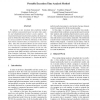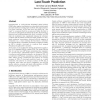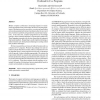73 search results - page 6 / 15 » Using Trace Scratchpads to Reduce Execution Times in Predict... |
DATE
2006
IEEE
14 years 1 months ago
2006
IEEE
In traditional parallel co-simulation approaches, the simulation speed is heavily limited by time synchronization overhead between simulators and idle time caused by data dependen...
RTCSA
2006
IEEE
14 years 1 months ago
2006
IEEE
We propose a new execution time prediction method that combines measurement-based execution time analysis and simulation-based memory access analysis. In measurement-based executi...
HPCA
2004
IEEE
14 years 7 months ago
2004
IEEE
For highest performance, a modern microprocessor must be able to determine if an instruction is ready in the same cycle in which it is to be selected for execution. This creates a...
ISCA
2000
IEEE
13 years 12 months ago
2000
IEEE
Communication in cache-coherent distributed shared memory (DSM) often requires invalidating (or writing back) cached copies of a memory block, incurring high overheads. This paper...
POPL
1994
ACM
13 years 11 months ago
1994
ACM
Modern computer architectures increasingly depend on mechanisms that estimate future control flow decisions to increase performance. Mechanisms such as speculative execution and p...



